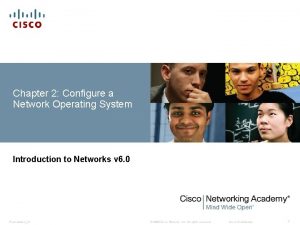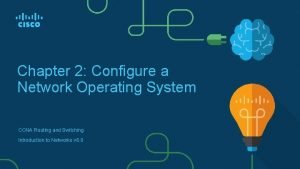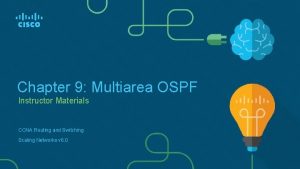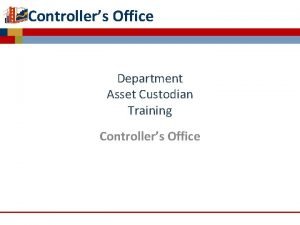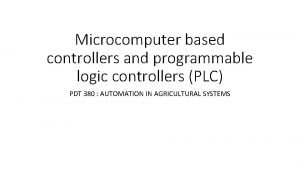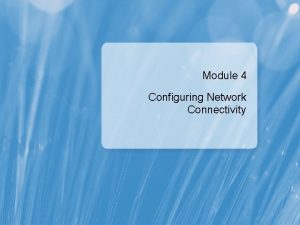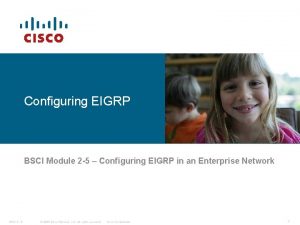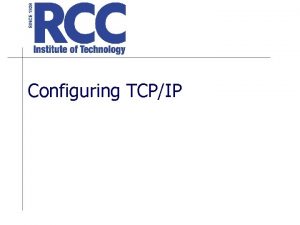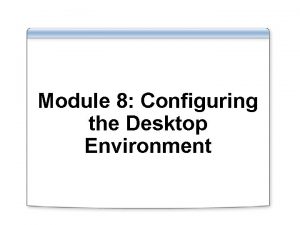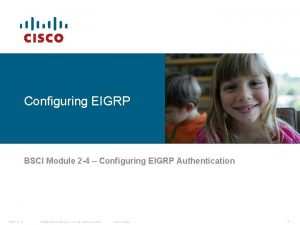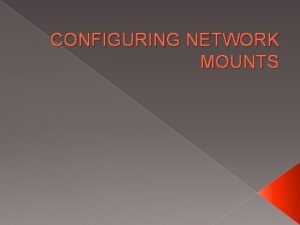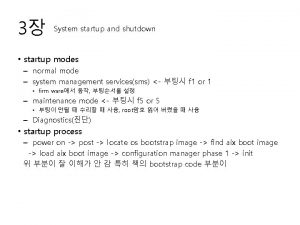System Startup Configuring APACS AAN Controllers Getting Going




















- Slides: 20

System Startup Configuring APACS & AAN Controllers

Getting Going…

Connect Controller • Connect power to the controller – 12 V ~1 A • Connect the controller to the network – Use a network switch or crossover cable Ethernet Switch APACS PC AAN-100

Check Operation • When everything is connected correctly, check the LEDs to confirm properation

Program the IP Address • Init. AAN utility to program • Ping to confirm

Connect Reader Interface • Connect the AIM-4 SL reader interface to the first communication port – Use ‘crossover’ wiring (T>R, R>T) – Set address of AIM-4 SL with DIP switch

Connect Reader • Follow reader instructions to connect wires for power, comms and LEDs/buzzer

Install Software • Install from CD or download package from Apollo Website • A key is required to use APACS – Hardware key – USB dongle that plugs into the PC – Software key – A file that is downloaded from Apollo’s website after providing an activation code. Save the file in the APACS install directory.

System Configuration • Launch System Configuration – Default user/password: 1/1 • Add PC – Right-click system tree: Add – Number isn’t needed – IP Address of local PC, use numeric address or name

System Configuration • Add the controller to the PC – Network communication type • Set IP Address in Communication Settings

Add Reader • Add the reader to the controller – The first reader on an AIM-4 SL is always master (matches number on DIP switch) – Select proper Port and Address – If you don’t have a door contact connected yet, go to hardware menu and unselect door contact control

Config Check • Your system tree should now look like this:

Permissions • Assign permissions to the default permissions set: ‘ 1’ – Make sure Message and Control permissions are granted for all objects

Check Global Settings • Make sure global settings are correct for the system – Click on root of system tree • Save configuration

Start Communication • Launch Alarm Mode – If messages are displayed for ‘Online’ then configuration is correct. Also check with Hardware Status

Test a Card • Swipe a card at the reader – A message should display with the result • Card Format Error or Wrong Facility Code

Set Card Format • Change Card Format in Controller Configuration to match the cards in use – Set the bit length and facility code • Save configuration and swipe the card again

Create Access Level • Name the Access Level and then add reader/time zone – Use the system time zone ‘Always’

Create User & Assign Access Level • Use the card number to create a new user with card and assign the AL

First Access Grant
 Apacs control system
Apacs control system Dido laat zich overhalen
Dido laat zich overhalen Tic tac toe going high going low going criss cross lollipop
Tic tac toe going high going low going criss cross lollipop Configuring a network operating system
Configuring a network operating system Configure a network operating system
Configure a network operating system Getting ahead
Getting ahead Human becoming theory symbol
Human becoming theory symbol Overlay transport virtualization
Overlay transport virtualization Dansguardian download
Dansguardian download Packet tracer configuring multiarea ospfv2
Packet tracer configuring multiarea ospfv2 If you are going through hell, keep going means
If you are going through hell, keep going means Fsu controller office
Fsu controller office Programmable logic controllers frank d petruzella
Programmable logic controllers frank d petruzella Derotative righting
Derotative righting Rms output voltage
Rms output voltage Frc pdp
Frc pdp Wan optimization gartner 2018
Wan optimization gartner 2018 How to fix a vacillator
How to fix a vacillator Ac voltage controllers convert *
Ac voltage controllers convert * Nhrc controller
Nhrc controller The control plan stored in the plc is called *
The control plan stored in the plc is called *



